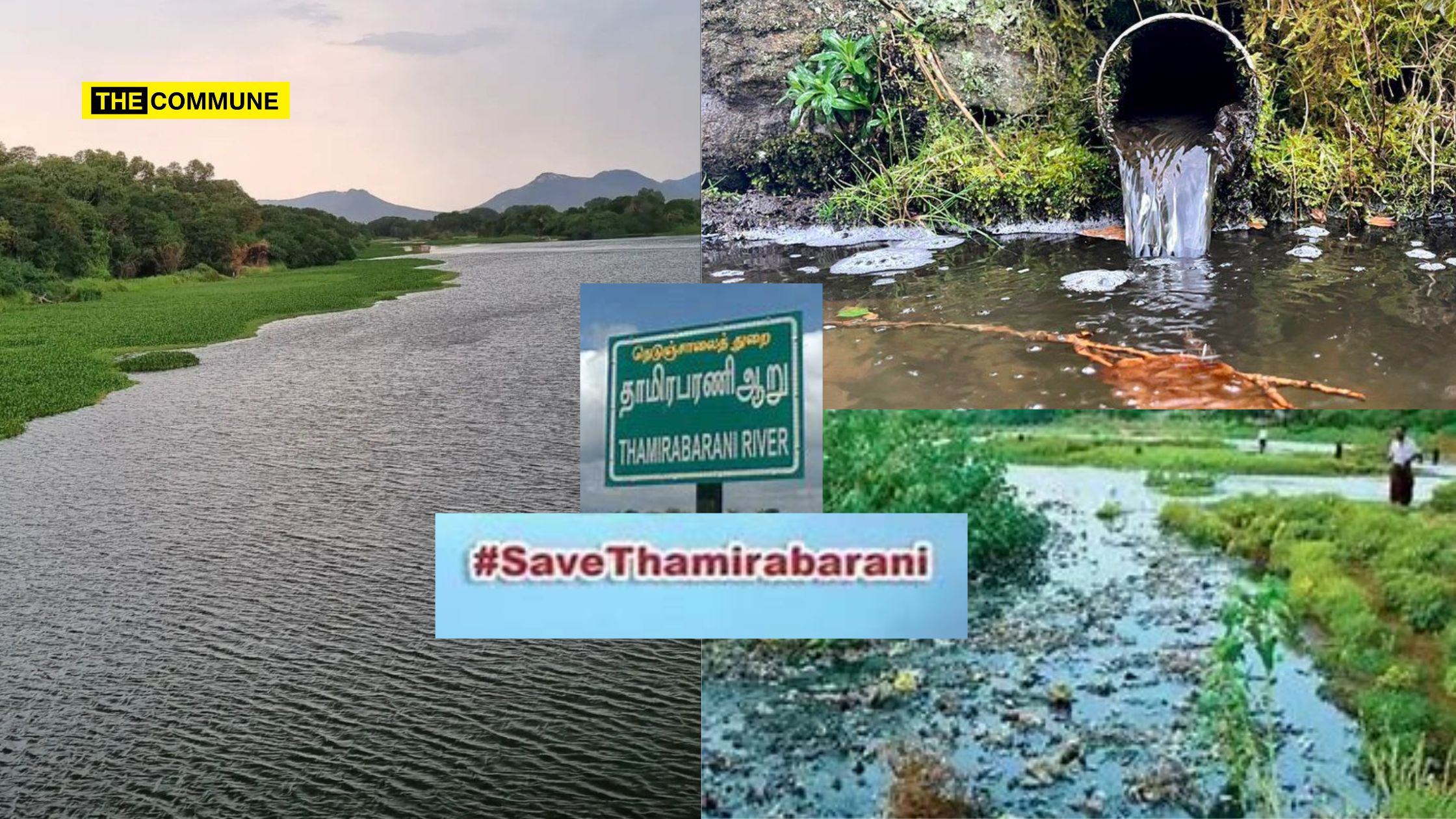
The recent study conducted by a private news organization has unearthed startling revelations about the suitability of Thamirabarani River water for human consumption.
According to the findings by News 18 Tamil Nadu, the water of the Thamirabarani River has been deemed unsuitable for drinking, raising serious concerns among the public of Tirunelveli and surrounding regions.
According to the ancient Thamirabarani Mahatmyam, the story of the river’s origin is intertwined with the legendary sage Agastyamuni. It is believed that a sequence of red lotus flowers, originating from Agastya at the Pothigai hills, miraculously transformed into a beautiful woman upon encountering Lord Shiva. This divine transformation resulted in the birth of the river, which was bestowed with the sacred name Thamirabarani.
The Thamirabarani River, known by different names such as Podhigai and Tambaraparani, is renowned for its unique characteristics. It is believed to possess traces of copper, as reflected in its Tamil name “Thamiram” which translates to copper. This copper content lends the river a distinct reddish hue, adding to its visual appeal and mystique. Flowing through the Tirunelveli and Tuticorin districts, the river meanders eastward until it eventually merges with the Gulf of Mannar.
The ancient river, with a history dating back 3200 years, spanning 130 kilometers in length, originates from the summit of Podhigai hills and flows through a basin area of 4400 square kilometers. It is the one and only perennial river in Tamil Nadu as of now. Along its course, it encounters seven dams before finally reaching the Gulf of Mannar near Punnaikayal in Tiruchendur. Unfortunately, this revered waterway is currently facing imminent danger as a result of government and human negligence. The neglect and disregard shown towards the river’s well-being pose a significant threat to its ecological health and overall survival. Immediate attention and action are required to address these pressing concerns and ensure the preservation of this invaluable natural resource.
The Thamirabarani River and its tributaries have suffered from pollution caused by the direct discharge of sewage, domestic waste, and solid waste by local authorities along their banks. During 2021, this concerning issue prompted the Central Pollution Control Board (CPCB) to officially designate the stretch between Pappankulam to Arumuganeri, spanning over 80 kilometers, as polluted. The CPCB has categorized this section as Priority-V, highlighting the need for consistent monitoring of areas where the water quality exceeds the desired limit of 3mg/l of BOD (biochemical oxygen demand). This classification underscores the urgency of addressing and improving the deteriorating water quality in the affected region.
According to the recent study by News 18 Tamil Nadu, it was discovered that the elevated calcium levels found in the Tamirabarani River render it unsuitable for both drinking and bathing purposes. The elevated calcium levels will cause disturbances in not only human life but also affects the aquatic ecosystem.
According to hydrology expert Prof. Arunachalam, the water has more harmful bacteria than the good bacteria required for human consumption. He said that people will get rashes and young children will see their hair turn grey earlier if they bathe in Thamirabarani.
During 2022, research conducted by the Society For Action against Environment (SAAE), an environmental organization, has revealed alarming findings. For instance, Marappanadu village, located on the river’s banks, is directly discharging approximately 54 kilolitres of untreated sewage into the river, endangering the water source near the drinking water pump house. The study further indicates that local bodies collectively discharge around 44.313 million litres of sewage water daily into the river. Tests conducted on water samples from the river indicate that the mineral content fails to meet the required standards. These findings highlight the urgent need for measures to address the pollution issue and restore the water quality of the Tamirabarani River.
As per the recently published action plan by the Tamil Nadu Pollution Control Board (TNPCB), the village of Murappanadu, with a population of 1,556 residents, directly releases 54 kilolitres per day (KLD) of untreated sewage into the Tamirabarani River, specifically in close proximity to the drinking water pump house.
The report also reveals that a substantial amount of sewage water, totaling at least 44.313 million litres per day (MLD), flows into the river. Out of this amount, 31.91 MLD is discharged by the Tirunelveli Corporation. According to the report, the Tirunelveli Corporation treats 24.2 MLD of sewage waste. At the point where the Thamirabarani River merges with the sea, specifically in Punnakayal village, water samples were collected and analyzed. The findings revealed an alarming level of biochemical oxygen demand (BOD), with a recorded value of 18.35 mg/l. This measurement is six times higher than the permissible level, highlighting the severe pollution and degradation of the river in that particular area.
It is important to note that a case concerning the restriction of untreated sewage discharge into the Thamirabarani River by local authorities has been pending with the South Zone of the National Green Tribunal (NGT) since 2015. The case highlights the ongoing legal proceedings and the pressing need for regulatory action to address the issue of sewage pollution in the river. Despite the passage of time, a resolution regarding this matter has yet to be reached, emphasizing the importance of expediting the legal process to protect the Thamirabarani River from further environmental harm.
Reviving the sacred Thamirabarani River requires more than just government initiatives. It necessitates the collective efforts of the residents of Tirunelveli and Thoothukudi, whose lives are intricately intertwined with the river. Restoring the health and vitality of the Thamirabarani can only be achieved through the active participation and commitment of the local communities who depend on the river for their livelihoods and well-being. It is imperative for the people to join hands and work together towards sustainable solutions, implementing measures to protect and rejuvenate this essential natural resource.
Efforts must be taken to prevent the Tamirabarani River from facing a fate similar to that of the Koovam (Cooum) River. The pollution and degradation experienced by the Koovam River serve as a cautionary tale, highlighting the urgent need to safeguard the Thamirabarani River from similar threats. It is essential to implement effective measures to mitigate pollution, prevent encroachment, and promote sustainable practices along the banks of the Thamirabarani. By learning from the past mistakes and proactively addressing environmental concerns, we can ensure that the Thamirabarani River remains a pristine and vital water resource for generations to come.
Click here to subscribe to The Commune on Telegram and get the best stories of the day delivered to you personally.




